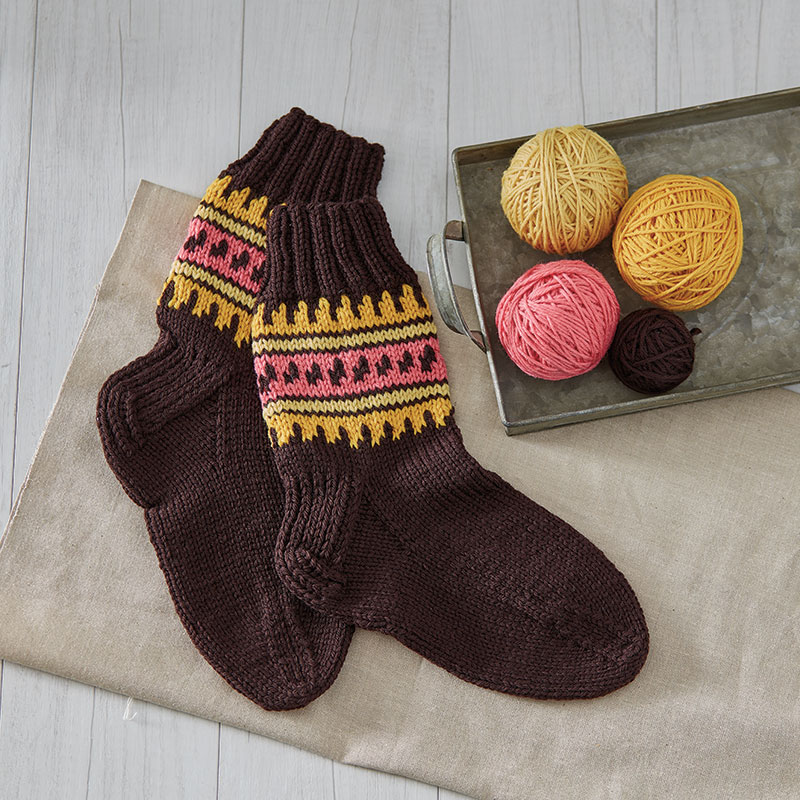In Finland, the name is spelled Saami, and because the majority of the Skolt Saami live in that area, I will use that spelling.
The Saami people have several subsets. Their traditional dress and language can vary as widely as the Danish language and traditional dress differs from a rural northern Norwegian dialect and traditional dress. The Skolt Saami people’s homeland is the Petsamo (or Pechanga) region, where the modern countries of Norway, Russia, and Finland meet. This out-of-the-way place provided a sheltered area, where they could raise reindeer and sheep. Its isolation also helped to protect and preserve the Skolt Saami handcrafts.
The Skolt Saami handcrafts are beautiful and diverse: pine-root weaving, headdress beading, fish-leather tanning, making reindeer products (such as shoes), wool spinning, and mitten and sock knitting. Like many of their Saami brethren, knitting entered Skolt Saami handcrafts largely in the 1800s. But, unlike the western Saami, Skolt Saami knitted socks.
Traditionally, Saami people harvested a sedge grass, dried it, and used that as shoe and reindeer-mitten filler, both for absorption and for cushioning the harder seams in reindeer leather. Perhaps because of the Russian influence, Skolt Saami began to knit and use thicker boot-type socks. (Note: I have seen beautiful examples of historical South Sami and North Sami knitted socks, but they are the exception and not the rule.)
A sock from the collection of the Sami Museum Siida in Inari, Finland, inspired Laura Ricketts’s design of this pair of cheerful and cozy socks. Photo by George Boe.
Nestled in the beautiful northern village of Inari, the Sami Museum Siida does an excellent job of showcasing the history of the Skolt Saami and Inari Saami of the region, as well as all Saami in Finland. Recording the history and preserving the crafts is of vital importance because the populations are very small: There are about 1,000 Skolt Saami in Finland, Norway, and Russia, of which about 300 speak Skolt Saami. There are 700 to 900 Inari Saami, of which about 300 speak Inari Saami.
Recently, the Finnish National Museum announced its intent to return hundreds of Saami artifacts housed at the national museum in Helsinki. The museum in Inari is currently expanding in preparation for accepting and maintaining this enormous collection.
Laura Ricketts’s pattern for the “Skolt Saami Socks from Inari” is available in the January/February 2018 issue of PieceWork, our 12th Historical Knitting issue.
Laura Ricketts researches historical textiles and patterns from her home in north-central Indiana and enjoys teaching and speaking. She is particularly interested in the knitting and crochet of the Sami and other peoples in the Nordic region. For more information, visit www.laurarickettsdesigns.com. She thanks Anni Guttorm, curator at the Sami Museum Siida in Inari, Finland.


